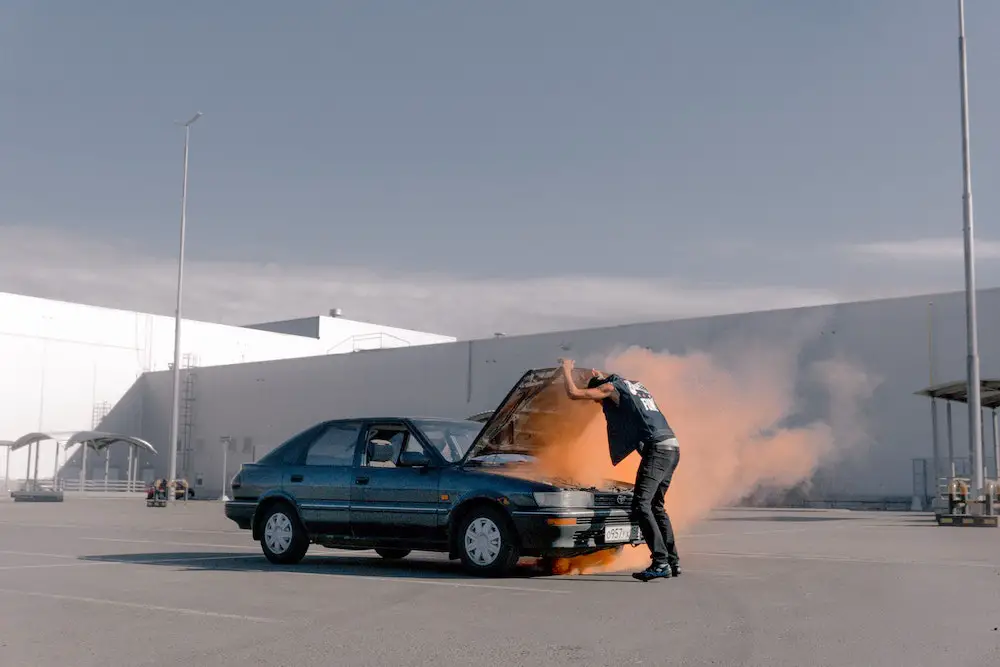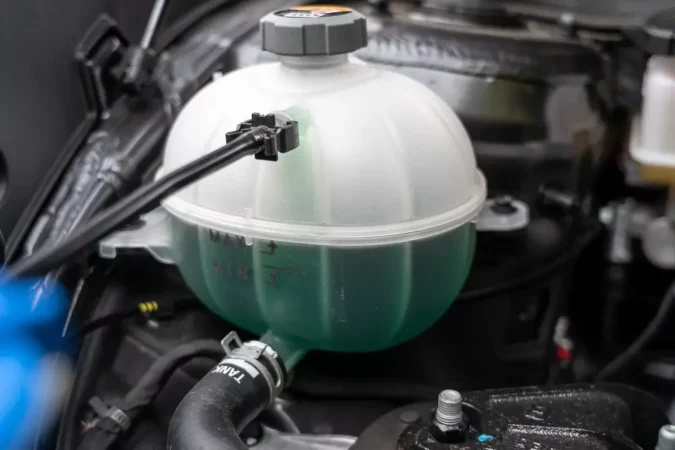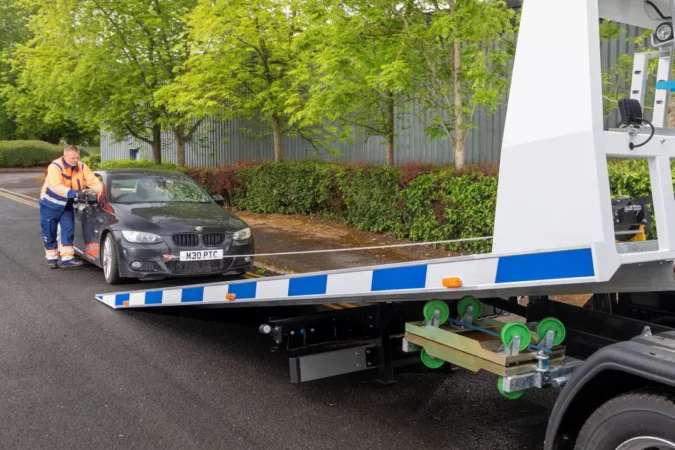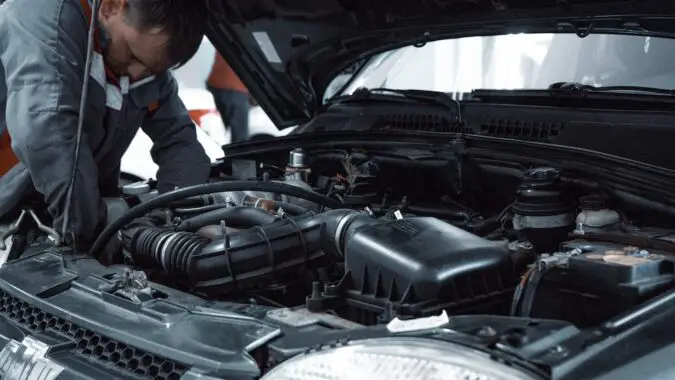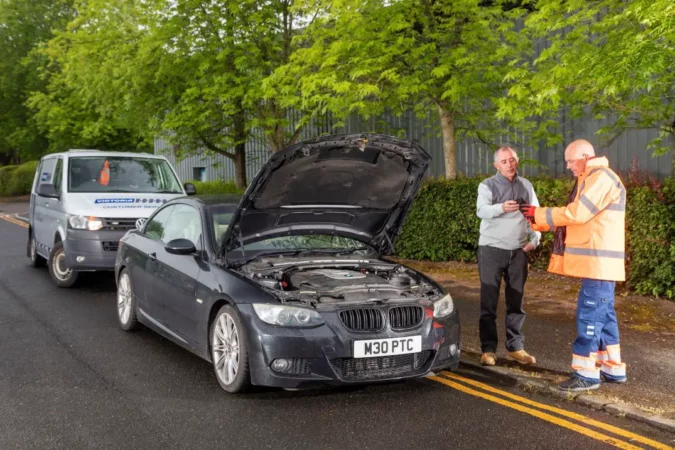Got an overheating engine and now you need to wait for the car to cool down? Or want to work on your car after driving it? In any case, we know the question in your mind is how long does it take for a car to cool down?
This post will answer all your questions about hot engines and cooling down. If you’re having overheating issues, stick around because we’re also going to delve into that to help you solve your problems.
How Long Does It Take For A Car To Cool Down
So, the main question then, is how long does it take for a car to cool down? It will generally take your car around 30 minutes for it to cool down to a lower temperature so that you can start inspecting the engine safely.
But how long does it take for a car to cool down completely? Well, that will take anywhere between an hour to three hours, depending on conditions. For example, parking the car under direct sunlight with the hood closed will take longer for the car to cool down.
If you need the car to cool down quickly, park indoors or under a shade. Open the hood to allow hot air inside the engine bay to escape. And if you have a fan lying around, use that to help cool down the engine more quickly.
How Long Does It Take For A Car To Cool Down To Change The Oil?
Whether you want to change the oil or just check the oil level, we recommend waiting for at least 30 minutes. This allows the engine to cool down, and for the engine oil to drip back from the engine into the sump.
This allows for an accurate reading when using the oil dipstick to check the engine oil level. If you immediately check it, then not all of the oil would’ve returned to the sump, and you’ll get an inaccurate reading.
As for an oil change, you should also wait for about 30 minutes. Again, this allows for the oil to drip to the sump, so you’ll be able to drain the entire system properly when opening the oil drain plug. And of course, reduce the chance of burn injuries from hot oil.
We should note that you can add engine oil at any time, even when the engine is still hot. But allowing for it to cool down will give you a more accurate reading, and reduce the chance of burning yourself while checking the engine.
For more insight, check out our explainer on whether to check the motor oil when it’s hot or cold. Similar concepts also apply when discussing whether to check the transmission fluid when it’s hot or cold.
How Long Does It Take For A Car To Cool Down To Check The Coolant?
How long does it take for a car to cool down to check the coolant? You might be able to check the coolant after 30 minutes safely. However, in some cases, you may need to wait for as long as an hour before the system cools down and you can safely check it.
This is because the car’s cooling system is a high-pressure system during operation. If it hasn’t cooled down enough, the system could spray hot coolant out when you open the radiator cap, seriously scalding you.
We recommend using gloves or a cloth when opening the radiator cap and opening it very slowly. Slowly loosen it, and if you hear a hissing noise whilst opening it, then wait for at least another 15 minutes as the system still has high pressure and there’s a good chance the coolant will burst when you open it.
How Long Does It Take For A Car To Cool Down After Overheating?
How long does it take for a car to cool down after overheating? It will generally take the same amount of time for the engine to cool down, even after overheating; 30 minutes to safely inspect the engine bay and 1 to 3 hours for it to cool down completely depending on conditions.
Parking in the shade and opening the engine’s hood will help to dissipate heat faster. Again, be very careful when inspecting the coolant and the cooling system.
How Long Does It Take For A Car To Cool Down After Overheating: Why Did It Overheat?
So, now you know the answer to the question “how long does it take for a car to cool down?” including how long to wait when checking the high-pressure cooling system. But your next question is probably why did the engine overheat in the first place? Why did you have a high engine temperature?
The cooling system is a pretty complex system with several crucial components. So, troubleshooting and finding the faulty part that’s causing your engine to overheat can be somewhat difficult. We’ve previously looked into what might be the causes of your car overheating.
However, you can make an educated guess by paying attention to the symptoms your car has, such as:
1. Coolant Running Out Fast
If coolant runs out fast in your car, then you should immediately check for leaks before the engine overheats and damage occurs. One of the first things to consider is how long does it take for a car to cool down.
As mentioned, wait for around 30 to 45 minutes. Then start by inspecting the engine bay and underneath the car for signs of coolant. Keep in mind that coolant comes in various colors, so identifying the correct one in your car is important.
External leaks are more common and easier to fix, so start by checking for leaks in the radiator hoses and cooling system components.
If you don’t find signs of an external leak, then you probably have an internal leak due to a blown head gasket. This will leak coolant to the cylinders or the oil system, depending on how the head gasket has broken.
Check your oil system (through the oil dipstick) for signs of coolant; oil should be clear with a brown hue, or older oil may be darker and slightly thicker. If the dipstick is covered in what appears to be chocolate milk, then your oil is mixed with coolant.
If coolant is leaking into the cylinders instead, then you should see thick white smoke coming from the exhaust. This is because coolant is being burned with the fuel and air mixture inside the cylinders, which results in thick white smoke.
In both cases, you’ll need to replace your engine head gasket. We have a great guide to the head gasket replacement cost to help you with your repairs.
2. Car Temperature Goes Up And Down
When your car’s engine temperature fluctuates while driving, there are two potential causes. If the variation seems unpredictable, the thermostat may be to blame.
This valve regulates the flow of coolant by opening and closing according to the engine temperature. It includes a bypass valve that remains open while the engine is cold, allowing coolant to immediately recirculate to bring the engine up to operating temperature more quickly.
Once the engine is close to operating temperature, the bypass valve closes and the thermostat opens the main valve to allow coolant to circulate throughout the entire system and maintain the optimal operating temperature.
If the engine temperature fluctuates erratically, you may have a faulty thermostat that’s opening/closing randomly. However, not that a bad engine coolant temperature sensor (ECT) could also be the cause.
A bad ECT could trigger a check engine light, and you’ll see the code P0118 when scanning with an OBD-2 reader (and how to use an OBD2 scanner). There are other possible reasons, which you can learn from the video above.
On the other hand, if the temperature rises when the car is stationary and drops when the car is in motion, we recommend inspecting the radiator fans.
When a car is stationary, the coolant temperature is bound to rise since no cold air is flowing through the radiator. That’s why cars are equipped with a radiator fan. If the fan isn’t functioning properly, it may cause the engine temperature to rise when the car is stationary. Our guide to the radiator fan not working may be of help.
3. Car Immediately Overheats
If your car’s engine overheats within a few minutes of turning it on, despite having coolant in the system, there are a few possible causes to consider.
First, it could be a faulty thermostat that isn’t opening the main valve. While checking the thermostat may require some effort, our guide to car thermostats can assist you in doing so.
Second, a faulty engine coolant temperature sensor (ECT) may also be to blame. However, if this is the case, a check engine light should typically be triggered, and the OBD system should show the code P0118.
Finally, it is also possible that the water pump for car is not functioning properly. To check this, locate the serpentine belt that powers the water pump and see if it is running. If not, then the water pump isn’t working either, causing it to overheat.
It’s worth noting that some cars have an electric water pump that isn’t powered by the serpentine belt. I had one such experience with a W205 Mercedes C-Class, and it took a while for me to figure out what was going on.
4. Car Takes Forever To Warm Up
On the opposite end of the spectrum, some drivers might experience their car taking an unusually long time to warm up. The question you probably have here isn’t “how long does it take for the car to cool down?” but rather, “what’s causing this? Is it safe to drive?
There are two possible reasons: The first and less probable reason is a radiator fan that’s always on. Radiator fans only turn on when the engine reaches a certain temperature. If it immediately turns on when you start the engine, it will take a bit longer for the car to warm up.
However, we believe the more likely reason is a faulty thermostat. In this scenario, the main valve is stuck open, which should be closed when the engine is still cold. We’ve previously discussed why your car struggles to start when the engine is cold. Otherwise, it’s also a good idea to learn whether do you have to warm up your car beforehand.
As a result, instead of recirculating the coolant back into the engine to warm it up, the coolant flows to the radiator to cool down. This simple fault leads to a longer time to reach the optimal operating temperature.
Is it safe to drive if the engine isn’t warm? Generally yes, but it isn’t ideal for a prolonged period. The engine would need to make adjustments to the air-to-fuel ratio amongst other settings. And this may affect performance, mileage, and emissions, and could damage some components in the long run.
How Long Does It Take For A Car To Cool Down: What To Do If Your Car Overheats
As someone who used to daily drive a classic Mini Cooper that had a very questionable restoration on the cooling system, I’m no stranger to being stranded on the side of the road due to an overheating engine. Here’s what I recommend you do:
- Find somewhere safe to pull over. A parking lot is preferred, even better if you can park in the shade.
- Wait for 30 minutes just to be safe, then inspect the coolant reservoir tank and radiator.
- If you have no coolant, refill the system. You can use distilled water if you don’t have any coolant, but we recommend that you change it afterward. Never use mineral water.
- After the car has cooled down, continue driving. Pay close attention to the temperature gauge, if it quickly overheats again, then you should find a safe place to stop.
- At this point, you either have a major leak or another problem that causes the car to overheat. I would recommend that you call a tow truck either to get the car home or to a repair shop, depending on your preference.
Diagnosing a cooling system problem on the side of the road is a bit of a hassle, especially if you’re not mechanically inclined. And the best course of action here is to stop driving your car and call for a tow truck.
I can’t stress this enough: driving without coolant or when the car is overheating will damage the engine’s internals. You’ll need an engine rebuild or replacement, which could cost anywhere between $1,500 to $4,500.
Cooling System Repair Cost
Now you know the answer to the question “how long does it take for a car to cool down?” and how to make an initial diagnosis on the cooling system. The next question is how much will you have to pay to repair your car?
Needless to say, an overheating engine should be taken seriously and addressed immediately. Left unrepaired, overheating issues can cause damage to the engine block and other internal parts, requiring either an expensive engine rebuild or replacement altogether. Here’s the repair cost estimate according to each problem:
- Hose or cooling line leak – $300 to $450 per hose section.
- Radiator leak – $700 to $1,200 (full radiator replacement).
- Radiator cap replacement – $10 to $50 for most cars.
- Blown head gasket (internal leak) – $1,000 to $2,000.
- Faulty or leaking water pump – $400 to $800.
- Serpentine belt replacement – $70 to $200.
- Thermostat replacement – $200 to $500.
- ECT replacement – $300 to $450.
- Radiator fan replacement – $150 to $500.
Note that the repair costs above include labor costs and are average estimates. Some cars may cost more, especially luxury and performance cars.
Additionally, these estimates don’t include other repairs that may be necessary. For example, if you have a blown head gasket that causes coolant and oil to mix, you’ll need to do an oil change as well, which will cost another $150 on average.
How Long Does It Take For A Car To Cool Down: FAQs
Got any more questions about overheating engines? You might find these answers helpful:
How Long Does It Take For Engine To Cool Down
You’ll need to wait for at least 30 minutes before it’s safe to inspect the engine, and around 1 to 3 hours for the engine to cool down completely depending on conditions.
How Far Can You Drive An Overheating Car
Do not drive your car if you see signs of overheating. Pull over immediately, allow the engine to cool down, and see if you need to top up the coolant. You risk major and expensive engine damage that will cost thousands of dollars to fix if you keep driving. Calling a tow truck is preferred.
How Long To Let Engine Cool Before Adding Oil
You can technically add oil immediately after driving. However, it’s best to wait for around 20-30 minutes so that engine parts cool down and you minimize the risk of burning yourself. Note that you should wait 20 minutes for an accurate reading from the engine oil dipstick.
How To Cool Down Transmission Fast
You can’t do anything to cool down a transmission aside from parking in a cool, shaded area away from direct sunlight. If you have transmission overheating issues, check the transmission fluid level and refill as necessary. Afterward, check for transmission fluid leaks as this is usually the cause of an overheating transmission. If no leaks are present, you may have an old dirty fluid that needs changing or damage to the internal parts.
How Much Are Car Engines
Both a new engine and a rebuild will cost at least $1,200 in parts. You’ll likely need to pay around $2,500 to $4,000 for a new engine in your car, and some cars will likely cost more than that. Another option is to get a used engine from a junkyard. They can be anywhere between $400 to $800 depending on the engine and condition, but you risk getting a bad engine.
How Hot Does A Car Engine Get
A car engine operates at between 190 to 220 degrees Fahrenheit. An overheating engine can reach as high as 275 degrees Fahrenheit, but anything beyond that 220-mark is already cause for concern.
How Long Does A Radiator Last
A car radiator is usually rated to last for 10 years or around 125,000 miles, but it could last longer than that if maintained properly.
What Causes A Car To Run Hot
The cause is generally with the cooling system. If you’re low on coolant, you likely have a leak somewhere. Check for external leaks in the engine bay, or look out for thick white smoke from the exhaust pipes, which is a sign you have a blown head gasket that causes an internal leak. If there’s no sign of a leak, you may have an issue with the cooling system’s water pump, thermostat, or radiator fans.
What Happens If You Run A Car Without Coolant
Your engine’s temperature will rise very quickly. The engine will overheat, which can cause the pistons and many other internal components to melt, bend, or even break. This will cost thousands of dollars to fix.
How Long After Adding Coolant Can I Drive
This could range anywhere between 5 minutes to a few days or even weeks, depending on how big the leak is in your car’s cooling system. Pay attention to the engine temperature gauge, and pull over as soon as you see it rising. Address a cooling system leak immediately before it causes severe engine damage.
How Long Does It Take For A Car To Cool Down: In Conclusion…
So, how long does it take for a car to cool down? You’ll need to wait for at least 30 minutes before you can start safely inspecting the engine, and anywhere between 1 to 3 hours before the engine cools down completely—depending on conditions.
How long does it take for a car to cool down to check the coolant? Again, 30 minutes is a good amount of time, but waiting somewhere between 45 to 60 minutes is safer to prevent burn injuries from the hot coolant. Parking under a shade and opening your car’s hood will help to dissipate heat from the engine more quickly.
If you have an overheating engine, it’s best to pull over and stop driving. Don’t wait until the engine seizes; if this happens, then you have severe damage to the engine’s internals and you’ll have to deal with costly repairs that will easily be in the thousands of dollars.
If you’re not sure what to do when your car is overheating, we recommend calling for a tow and getting the car home or to the repair shop. Again, continuing to drive is risky, and trying to diagnose and fix it will take too long if you’re not mechanically inclined.
Hopefully, this article has been helpful for you, and now you know the answer to “how long does it take for a car to cool down?” It’ll be a while, so maybe go get a coffee while waiting.

